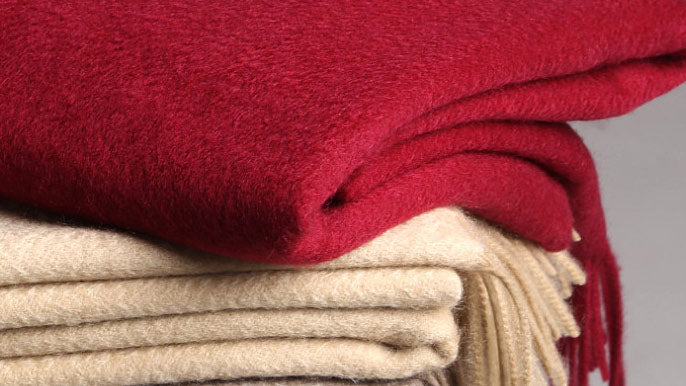Your Cart is Empty
Free US Shipping & Returns

Extended free returns until 01/31/26


Cashmere is a soft natural fabric that collected from the fine hair of the under-layer coat of cashmere goats. The purpose of the layer is to protect the goat from harsh weather which is why these goats are more commonly found in areas of Mongolia and China where the temperature can drop to -40 degrees in winter.
The cashmere goats, to survive in the cold weather develop two layers of coat. The outer layer prevents the undercoat from getting wet. The inner layer constitutes fine hairs that provide insulation. These fine hairs are what we called ‘CASHMERE’.
The quality of the cashmere fiber differs in different herds of cashmere goats depending on their origin. The best herd for producing cashmere is the goats from Inner Mongolia. This is because the area faces the harshest winter and thus the goats have the finest and longest hairs as the undercoat.
The color of the cashmere fleece, its fineness, and length all play a role in determining the quality of the cashmere scarf.
The fineness and length of the cashmere hair are the most significant factors. Cashmere scarf using fine and long fibers prove to be better as they perform better in maintaining their shape compared to those manufactured with thick and short cashmere hair. They also pill less. The cashmere scarf made of fine and long fiber also improves in quality with every wash.
White cashmere hairs are preferred for producing the cashmere scarf since they can be dyed to various colors without much processing.
Determining the quality of the 100% cashmere scarf
The cashmere scarf should not cause any scratchiness or itchiness. The fabric needs to be soft on touch. The cashmere scarf which is soft but not too much is the one with good quality as cashmere softens further with time. Some companies would endeavor to increase the softness of the fabric using softeners or by over-washing it. Such cashmere scarves do not last long. You should avoid cashmere scarf that is overly soft to touch.
When you stretch a piece of cashmere scarf, it will return to its shape if it is of good quality. As you stretch, observe the knitting. Tight knits imply better resilience. Such cashmere scarves are less likely to deform when you wash them.
When you rub your hands on any cashmere scarf, little balls should not be formed immediately. If they do, it implies that the garment has used a significant amount of shorter hairs, compromising the quality. Cashmere scarf does pill over time(after a few wears) but should not when they are new.
The softness and insulation of pure cashmere scarf make it a luxurious item. This wrinkle-free cashmere scarf offers a refreshing feel in spring and keeps you warm and cozy during winters. Pure cashmere softens with time and does not pill even after being washed. It has a long life.
Blends are made of combining cashmere with other fabrics such as silk, synthetic fibers or wool. If the scarf is not made of 100% cashmere, the cost will be much less. The blends usually use cashmere fibers with inferior quality, so they will not have the same essence of softness and insulation that is the characteristics of cashmere.
100% cashmere scarf is significantly warmer than wool and lighter as well. Thus, it is always a better idea to purchase pure and authentic cashmere scarf instead of blends.